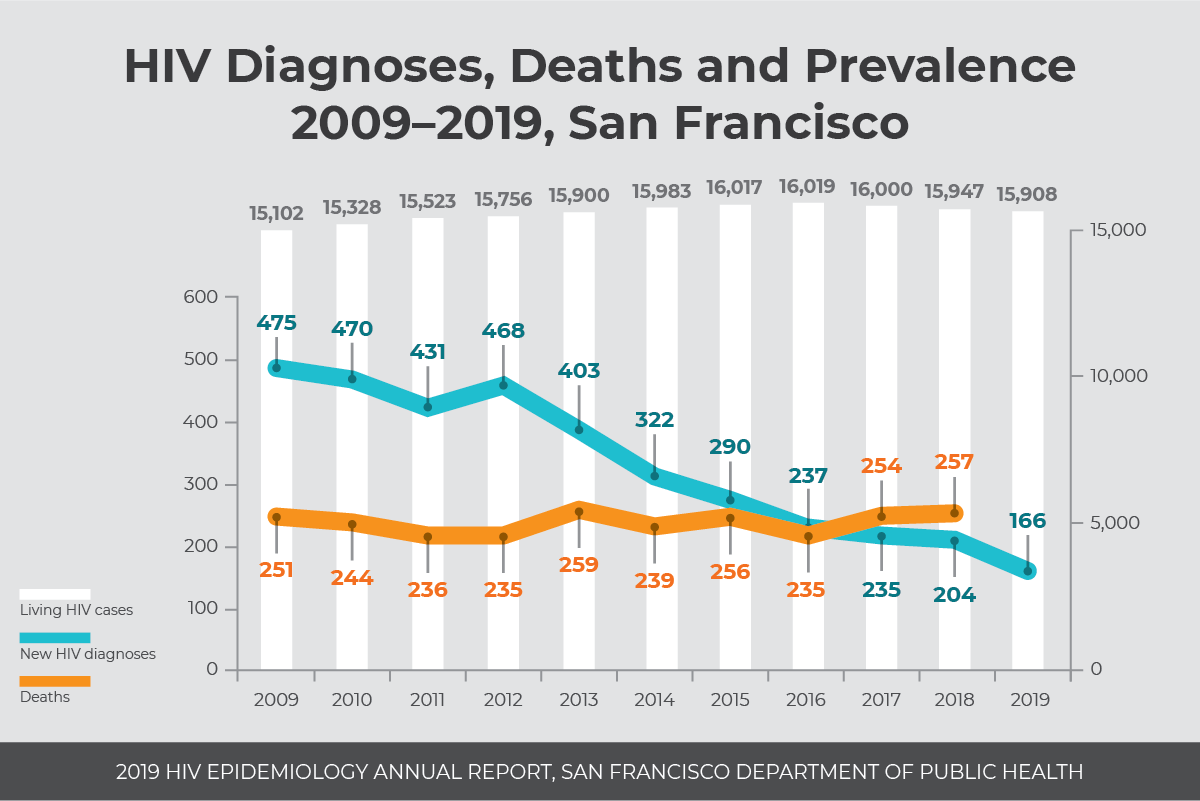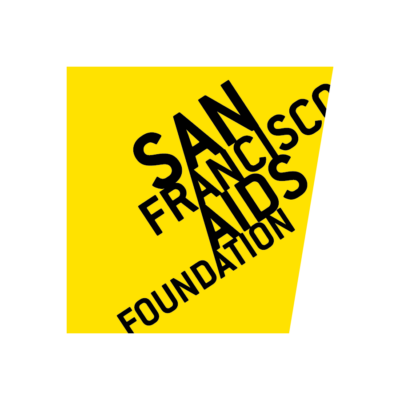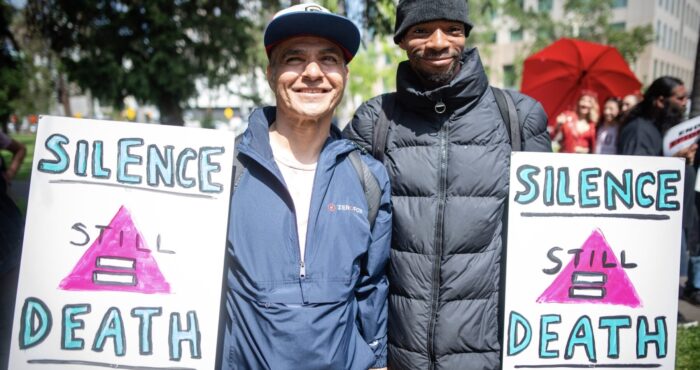Decline in 2019 SF HIV infections, but gains likely to be challenged by COVID-19

San Francisco, September 10, 2020–San Francisco Mayor London Breed and the San Francisco Department of Public Health released the annual HIV Epidemiology Report with data from 2019, showing decreases in the number of new HIV diagnoses and progress in HIV care outcomes. The data do not extend into 2020 so the impact of COVID-19 and shelter-in-place on HIV transmission, prevention and care is not yet known–although the pandemic is likely to have significantly challenged progress already made by impacting HIV testing, PrEP access and access to HIV care.
“The fact that San Francisco continues to experience consistent declines in HIV diagnoses and improvements in HIV care while the United States’ outcomes remain flat is something our city should be immensely proud of achieving,” said Joe Hollendoner, CEO of San Francisco AIDS Foundation. “Our hard-won progress is at-risk, however, on account of COVID-19. If we don’t want our city to experience a reverse in trend, we must double down on efforts to end HIV transmission, ensure that HIV status does not determine quality of life, and eliminate racial disparities.”
Trends in HIV diagnoses
There were a total of 166 HIV diagnoses in 2019, a 19% decrease from 2018 which saw 204 diagnoses and a 48% decrease in the previous five years.
Black men and Latinx men experienced the highest rates of HIV diagnoses (79 per 100,000 and 61 per 100,000, respectively). Diagnosis rates declined among all groups except Asian and Pacific Islander men (12 per 100,000).
The number of new HIV diagnoses declined among people experiencing homelessness and people who inject drugs. Trans women and people over age 50 accounted for a higher percentage of HIV infections in 2019 than in previous years.
Trends in HIV care
The percentage of people newly diagnosed with HIV who are linked to care within one month of diagnosis continues to increase, with 95% of people diagnosed in 2019 linked to care within one month.
A large percentage of people newly diagnosed become virally suppressed within six months (78% among people diagnosed in 2018). 81% were virally suppressed within 12 months.
The average amount of time it takes for a newly diagnosed person to reach viral suppression after diagnosis is decreasing, with a median of 46 days among people diagnosed in 2018 compared to 65 days in the previous year.
Disparities are apparent for people without housing, however, with only 39% of people experiencing homelessness being virally suppressed (compared to 75% of people living with HIV overall). Viral suppression rates were also lower for women (71%), Black/African Americans (70%), people who inject drugs (66%), men who have sex with men who inject drugs (69%), and transgender women who have sex with men and who inject drugs (67%).
Read the entire report
https://www.sfdph.org/dph/comupg/oprograms/HIVepiSec/HIVepiSecReports.asp
###










